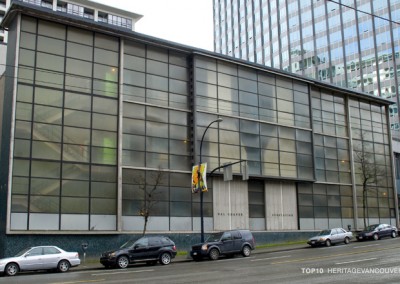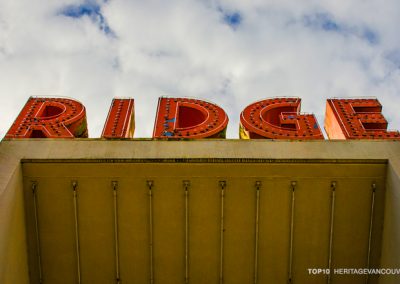The historic character of Granville Street in currently under threat, and there is a distinct possibility that older, smaller heritage buildings, which are unique to the area, will be destroyed in the name of “progress” and a desire to “clean up” the area.
Significance
Why is Downtown Granville Street significant?
Granville Street is one of the founding streets of Vancouver. After development expanded outside of Gastown, the CPR – whose terminal was at the north end of Granville Street – focused on developing this as the central commercial street in Vancouver. In many ways, the evolution of Granville Street over more than a century tells a comprehensive story about the history of commerce in Vancouver.
In 1889, four important Victorian brick Italianate structures were completed: the Vermilyea Block (921-927 Granville Street), the Holman Block (1202-1204 Granville Street), the Keith Block (1294 Granville Street), and the Yale Hotel (1300 Granville Street).
The Holman Block and the Keith Block are among the oldest in the city. The Holman Block, 1202-1204 Granville Street, located at the corner of Davie Street, was one of the earliest hotels to be built in the area. Construction commenced in 1888 on this three-storey brick block and was completed the following year.
Threat
What is the threat to Downtown Granville Street?
The historic character of Granville Street is currently under threat. The City of Vancouver is now completing the Granville Street Redesign, the purpose of which has been to return Granville to its position as one of Vancouver’s most important streets. The City is spending over 20 million dollars to add trees, pedestrian lighting, granite bands and custom designed benches, bollards and bike racks to the area between Cordova and Drake Streets.
One of the goals of the project is “Design a street that reflects Vancouver’s unique identity, character and sense of place.” Although the sidewalks are looking newly-elegant, it is obvious that there has been a slow but steady erosion of the condition of the buildings that front onto Granville Street. This had led to calls for wide-spread redevelopment as a “solution” to the neglect and decay, and a desire to “clean up” the area. This historic streetscape could become one more street of new high-rise towers and glassy storefronts.
Many of the buildings that define the character of the 800-1200 blocks of Granville Street are not on the City of Vancouver Heritage Register.
Of the four important 1889 Victorian brick Italianate structures, only the Yale Hotel and the Vermilyea Block are on the Heritage Register; the Holman Block and the Keith Block are not.
There are at least twelve other heritage buildings between 800-1200 Granville Street that are not on the Heritage Register. As Granville Street continues to redevelop, without any formal heritage recognition it is just a matter of time until these buildings are demolished, and we will lose the visual richness of the street’s historical legacy.
In addition to the lack of protection for many of Granville Street’s heritage buildings, the City of Vancouver has very few incentives to offer building owners to make restoration of their buildings an attractive and profitable venture. The City’s Heritage Density bank has been restricted, and incentives such as façade grants and tax relief that are available in the Historic Areas are not available to building owners on Granville Street.
In addition, the significant building interiors along Granville Street, including the remarkable Commodore Ballroom and the Orpheum and Vogue Theatres, are not legally protected, and could be radically altered. Another heritage building with a significant interior, the Templeton Restaurant at 1087 Granville Street, is not even on the City’s Heritage Register.
The current zoning framework and policies may actually put many of these heritage buildings at risk. In the early 1990s, downtown Granville Street was down-zoned to protect its historic building stock. However, there were no incentives offered for retention, and some significant one and two-storey buildings (such as the historic theatres) are well below the allowable density of 3.5 FSR (floor space ratio).
With the current freeze on the Density Bank, there is no effective way to assist owners in keeping these smaller buildings. Other City policies such as the Short Term Incentives for Rental Housing (STIR), which allows for spot density increases, may put further pressure on the existing building stock. One current STIR project on Granville Street has resulted in an application for a building that is over the 90-foot height limit and almost twice the allowable density.
History
Growth in the downtown core was rapid following the Great Fire of 1886, and only three years later there were a number of permanent new buildings in place; the first Granville Street Bridge was built in 1889 to provide access to the new suburbs to the south. A number of hotels were built in the new commercial service area for the Yaletown settlement, which was developing as a residential neighbourhood for CPR workers. In 1890, the first lines of the new electric street railway system were laid on Hastings, Main and Granville Streets, promising further commercial and residential activity.
It was during the Edwardian era that Granville Street gained significance as a centre of business activity. Many of the businesses catered to the population housed in the apartment hotels and surrounding residential areas; there were also a large number of restaurants located here, as the hotels did not have individual cooking facilities.
The architectural firm of Parr & Fee had extensive land holdings on Granville Street, and during this time designed and developed a number of large residential apartment hotels in a consistent style that still dominates the street.
After the end of World War One, prohibition forced the closing of the local saloons, making many of the hotels unprofitable. This stagnation left a mix of densely developed sites next to one-storey buildings and vacant sites, resulting in a ‘sawtooth’ street profile that has not been radically altered since 1913.
From very early in the City’s history Granville Street was established as the theatre district, and several older theatres were replaced by larger, more modern structures. Signage was especially large and prominent, and commercial businesses had marquee signage that competed with the theatres in size and complexity; Granville Street became known as the ‘Street of Lights’.
Increasing prosperity during the 1920s was demonstrated by the construction of several larger theatres and the Commodore Cabaret later in the decade. This renewed building activity ended with the Great Depression in 1929.
By 1939 the economy was back on track, but the Second World War interrupted further development. Post-war prosperity led to the construction of the new Granville Street Bridge; although this provided a grand entry to the area, the diversion of traffic onto Howe and Seymour Streets adversely affected the retail nature of Granville. The cessation of streetcar service in the 1950s also contributed to the area’s continuing decline.
Project 200, a proposal to build a highway through Gastown and the north portion of Granville, first endangered Granville Street in 1968. Citizen groups severely opposed the development, and the highway never materialized. During the same time period, the Pacific Centre Mall was constructed and Granville between Nelson and Hastings became a pedestrian mall. This was meant to increase foot traffic, and thus increase commercial activity. Unfortunately, as the Pacific Centre Mall flourished, businesses on Granville suffered. Gradually, the southern portions of downtown Granville Street deteriorated and adult bookstores and strip clubs filled their storefronts.
Granville is currently in need of a renewal, and the City of Vancouver is attempting this with their Granville Street Redesign Project. Already there have been new establishments opening in the 800 block, including trendy shops such as Urban Outfitters, Puma and Adidas. However, we may be at a tipping point in whether or not the heritage significance of Granville Street is recognized and restored, or erased for new development.
Position
Heritage Vancouver’s Position
Heritage Vancouver supports the preservation of the unique characteristics of Downtown Granville Street. Despite its decline, Granville Street retains a striking ensemble of historically significant buildings that reflect the entire context of the City’s development. With the renewal and revitalization of these buildings, Granville Street would once again take its place as one of Vancouver’s great streets.
This can only be accomplished by recognizing and protecting the heritage buildings that are not currently listed on the Heritage Register. It is unlikely that these structures will be retained without either designation or significant incentives, regardless of the low permitted density of the existing zoning framework.
In recognition of the historic importance of this area of Granville Street, Heritage Vancouver recommends that the City of Vancouver:
Initiate a comprehensive heritage and urban design study of the 800-1200 blocks of Granville Street that will seek to protect the valuable resources that define the street’s character.
Work with community partners to undertake a full review of heritage incentives that could be used to conserve this historic building stock, including development incentives such as density transfers and financial incentives such as tax rebates.
Include – at a minimum – the following 12 buildings on the Vancouver Heritage Register, most urgently two very significant 1888-89 Victorian Italianate brick structures: the Holman Block, 1202-04 Granville Street and the Keith Block, 1294 Granville Street.
Key buildings which should be added to the Vancouver Heritage Register
812-816 Granville Street
Allen Building; Braunton & Leibert, Architects; 1914
800-804 Granville Street, at Robson (SE corner)
Townley & Matheson, Architects; 1922*
*(Building permits A-3385; A-3686; T&M job card #103)
801-809 Granville / 700-720 Robson Street [demolished Feb 2012]
The Farmer Building; Maclure & Lort, Architects; 1922
881 Granville Street
The Plaza Theatre, now Venue; Thomas L. Kerr, Architect; 1936
901-909 Granville Street
The Gresham Hotel; 1908
917-919 Granville Street
The Studio Theatre, now Tonic; H.H. Simmonds, Architect; 1948
1001-1019 Granville Street
Jermaine’s Ladies Wear; Ross A. Lort, Architect; 1931
1002-1006 Granville Street
Hotel Barron (1912-1925); later The Belmont Hotel (1926-1970), now the Comfort Inn (1971 To Present); Parr & Fee, Architects; 1910-1911
1087 Granville Street
Originally Adele’s Coffee Shop, now the Templeton Restauran; circa 1934
1160-1176 Granville Street
Hotel Martinique, now Howard Johnson’s; Parr & Fee, Architects; 1906
1202-1204 Granville Street
Holman Block/Golden Gate Hotel, later the Hotel Tourist; 1888-1889
1294 Granville Street / 677 Drake Street
Keith Block; Noble Stonestreet Hoffar, Architect; 1888-1889
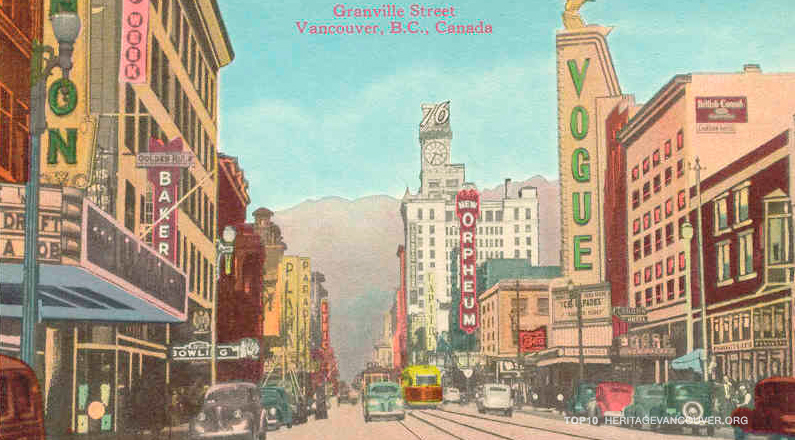


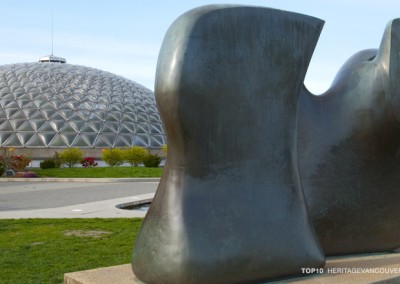
![3. Sir Guy Carleton School – Carleton Hall (1896) [saved]](http://heritagevancouver.org/wp-content/uploads/2011/11/HVS-Top10-795x440-carleton-400x284.jpg)
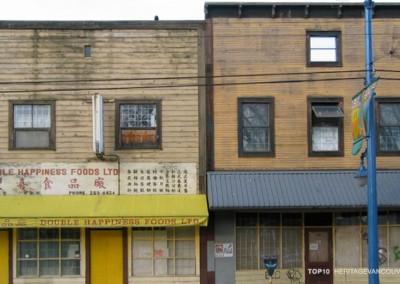
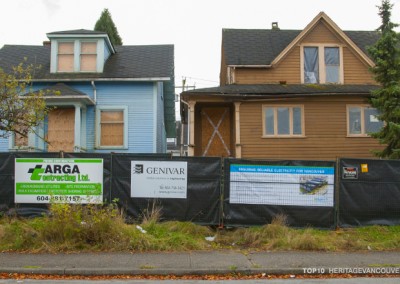
![7. Pantages Theatre (1907) [lost]](http://heritagevancouver.org/wp-content/uploads/2016/05/t10-pantages-B-795-400x284.jpg)
